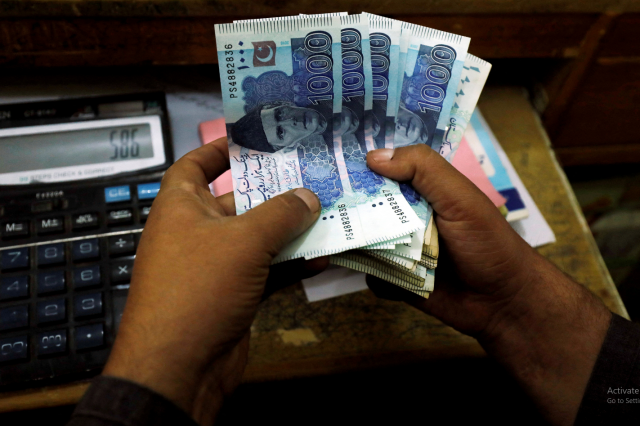Remittances edge up to $3.18b
Rise 1.46% MoM, 11.3% YoY in September, inflow surge from Saudi Arabia, UAE drives quarterly total to $9.54b

Pakistan’s remittances reached $3.18 billion in September 2025, reflecting a modest 1.46% month-on-month rise, supported by an uptick from the GCC region, which contributed nearly two-thirds of total receipts.
The inflows witnessed an increase of 11.3% on a year-on-year basis, according to the latest data by the State Bank of Pakistan (SBP). Speaking to The Express Tribune, Ali Najib, Deputy Head of Trading at Arif Habib Ltd said, “Total amount of remittances received in the first quarter of fiscal year 2026 (1QFY26) reached $9.54 billion, an 8% YoY increase, aligning closely with budget expectations.”
He noted that this consistent growth supports Pakistan’s external stability by easing pressure on the current account and exchange rate, while strengthening foreign reserves. Sustained remittance momentum, driven by stable Gulf economies and improved banking channels, provides a crucial buffer against trade deficits and helps maintain macroeconomic resilience amid global uncertainty, highlighted Najib.
The country-wise breakdown paints a telling picture of Pakistan’s remittance dependency. Saudi Arabia remained the single largest source, accounting for inflows worth $750.9 million in September, followed by the United Arab Emirates (UAE) with $677.1 million and other GCC countries with $299.6 million. Among non-Gulf destinations, the United Kingdom contributed $454.8 million and the United States $269 million.
Within the UAE, Dubai alone accounted for over $510.9 million, overshadowing inflows from Abu Dhabi ($142 million), Sharjah ($10.8 million), and other emirates. This concentration reflects how remittance inflows are clustered around specific cities with large Pakistani labour communities, particularly in the Gulf construction and service sectors.
On a month-on-month basis, a 2.6% uptick in remittances from the GCC region advanced aggregate inflows in September 2025, noted KTrade Research. In contrast, remittances from the UK saw a mild contraction of 1.9% MoM in September 2025. Strong inflows from Saudi Arabia (+10%), UAE (+20%), and the EU (+16%) offset minor declines from the USA, said Najib.
However, such overconcentration in GCC markets leaves Pakistan’s remittance outlook vulnerable to external policy and economic shifts, as countries like Saudi Arabia and the UAE pursue labour nationalisation policies.
The global economic slowdown and increasing automation in Gulf labour markets also threaten traditional employment sectors such as construction and retail, where most Pakistani migrants are employed. Moreover, the shift towards skilled labour demand in the GCC contrasts sharply with Pakistan’s largely low- and semi-skilled workforce, underscoring the need for targeted training and export diversification.
While remittances from the GCC have held steady, inflows from non-Gulf destinations such as Europe, North America, and East Asia have remained stagnant or declined in recent years. Analysts attribute this to limited new migration corridors, restrictive visa regimes, and Pakistan’s slow adaptation to global labour trends.
Pakistan’s policymakers face the dual challenge of maintaining remittance momentum while reducing structural dependence on a handful of host countries. Remittances currently account for over 7% of GDP and serve as a crucial buffer for the current account balance and foreign reserves, especially as export growth remains sluggish.
However, the absence of a coherent labour export strategy and inadequate vocational training programmes are impeding the shift towards higher-value migration. Experts suggest Pakistan must emulate models used by countries such as Bangladesh and the Philippines, which have diversified their overseas labour markets and skill portfolios.
The Ministry of Overseas Pakistanis has repeatedly emphasised expanding into new destinations, including Japan, South Korea, and Eastern Europe, under bilateral labour agreements. But bureaucratic delays and coordination gaps between the ministries of labour, foreign affairs, and finance have slowed tangible progress.
At the same time, domestic economic instability and the volatile rupee continue to shape remittance behaviours. When the rupee depreciates sharply, remitters often delay transfers in anticipation of better rates, causing short-term fluctuations in inflow data.
The Pakistani rupee appreciated by 0.15% MoM to Rs281.21 per dollar as of October 8, 2025, despite the Dollar Index (DXY) rising by 1.43% MoM during the same period. This was partly due to stronger remittance inflows and administrative measures reducing the spread between the USDTT rate and the interbank rate, noted KTrade Research.



















COMMENTS
Comments are moderated and generally will be posted if they are on-topic and not abusive.
For more information, please see our Comments FAQ